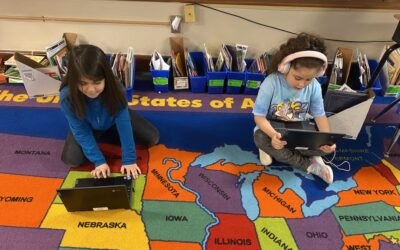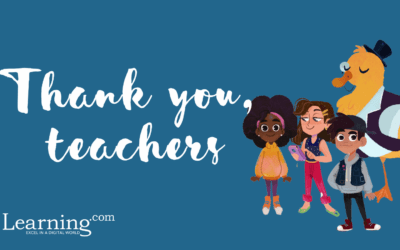Computational thinking has become important to teaching problem solving in education because it empowers students with processes to develop strategic solutions to complex problems, essentially “leveling up” their skills, or creating algorithms that can make future processes more effective. This enables students to take on more complex challenges and prepare for real-world applications.
Decomposition in Computational Thinking
While the process of computational thinking is multifaceted, there is one key to computational thinking that is essential for success: decomposition. Decomposition is the process of breaking a complex task or problem into smaller, more manageable pieces. From this decomposition, students can eliminate unnecessary information, identify patterns and begin the process of identifying which parts of the problem are most important, how to solve or complete each step, and how those parts can be put together for a clear and unified step-by-step solution.
Why is the Decomposition Technique Required in Computational Thinking?
The technique of decomposition is required in computational thinking because it breaks complex tasks into subtasks while developing a sequentially-based understanding of the problem. This allows unnecessary information to be discarded, patterns to be identified, relevant information to be extracted and the process of step-by-step resolution to be defined for a more effective problem-solving process.
By definition, computational thinking is the process of tackling complex problems and finding a clear, step-by-step solution that can be replicated. Decomposition, therefore, is essential to this process as it includes breaking a task into several sub-tasks, helping to align the task to a step-by-step solution.
Another reason decomposition in computational thinking is important is because it allows each subtask to be examined more closely. This not only helps to categorize information as essential or non-essential, but also empowers the problem-solver with a better ability to analyze each specific part of the task or challenge to more effectively develop a reasonable solution.
Examples of Decomposition in Computational Thinking
Below are some real-world examples of utilizing decomposition in computational thinking:
- You have to clean your house. Instead of facing the task as a whole, you practice decomposition by breaking the task into a to-do list with multiple subtasks.
- To build shelves for a storage space, you practice decomposition by measuring the space, creating a blueprint or plan to determine the size of the shelves and the materials you need to accomplish the task. Next, you purchase the supplies and cut the lumber to size, then install one wall of shelves at a time.
- In science, to prove or disprove a hypothesis, you practice decomposition by creating subtasks including background research, observation, generating a hypothesis, determining which variables to test, performing experiments and drawing a conclusion.
Final Thoughts
Consider how often computational thinking appears in your everyday life. Do you naturally use decomposition and computational thinking to resolve a challenge? For more information about computational thinking and how they apply to students, explore some of our most recent articles:
Examples of Digital Literacy in Education
Digital literacy is having the skills to effectively use technology and to do so safely and responsibly. “Digital” refers to technology, ranging from computers and the internet to technological objects and programs such as cell phones, smart home systems, check-in...
Arlington ISD Renews Focus on Digital Skills for Future-Ready Students
Situated between Fort Worth and Dallas, Texas, Arlington Independent School District serves 56,000 K-12 students, and has offered Learning.com's EasyTech for nearly a decade. But, driven by the shift to online STAAR testing – which would require keyboarding fluency in...
The Importance of Digital Citizenship in Education
In 2019, 95% percent of 3- to 18-year-olds were reported to have home internet access, according to the American Community Survey (ACS). In a separate survey, researchers found that 55% of children own a tablet or smartphone, while only 30% of parents reported feeling...
Join Us in Thanking Teachers This Week
This week is National Teacher Appreciation Week, an important time to recognize the invaluable contributions of teachers in our lives. From early childhood to higher education, teachers play a crucial role in shaping our intellectual and personal growth. Teachers...
Tips for Teachers and Parents to Prepare Students to be Safe Online This Summer
Being a good citizen in the digital world is just as important as being one in the physical world. Digital citizenship means being respectful and responsible while online, and it requires critical thinking skills to navigate various online environments. As technology...
The Changing Role from Librarian to Digital Media Specialists
What comes to mind when you think of a school librarian? Books? Circle time? Quietly selecting literature to read at a table? That may be what we remember from our own childhood, but the days of a cardigan wearing, student shushing librarian are now replaced by the...
30 Examples of Digital Literacy in 2023
Digital literacy is the ability to understand, use and interact with technology, media and digital resources in real-world situations. Every interaction with the Internet or digital media requires some level of digital literacy. Digital literacy is an important skill...
Improving Partnership for Student Success
In January 2020, I had the good fortune of joining the team at Learning.com. The Customer Success team at Learning.com is unparalleled in their dedication to customer advocacy. Comprised of former educators, they possess a deep empathy for the daily struggles faced by...
How One Teacher is Creating a Safe Space for Girls to Learn about STEM
My name is Allyson Varlas, and this is my fourth year as a fifth grade Title I Reading Specialist for the Marshall County School District in West Virginia. I was inspired to host an all-female career fair through my female youth mentoring program, Central Sisters,...
Education 4.0 & the Future of Work
Up until the early 20th century, futurists estimated that human knowledge doubled every 100 years. By the mid 19th century, knowledge doubled every 25 years. Today, thanks to computers’ processing power, knowledge doubles every 12 hours. This exponential increase in...
Leveling Up with TA-TEKS: Computational Thinking, Coding and Python
One of the significant shifts in the updated Texas Essential Knowledge and Skills for Technology Applications, or TA-TEKS, is a focus on teaching computer science skills. In fact, the revised TA-TEKS require foundational computational thinking skills to be taught as...
To Enhance Curriculum Implementation, Start with Communication
What’s in a journey to curriculum implementation? A lot, it turns out. When multiple educators are using the same program or application, it’s essential that they all receive the training, resources and clarity of purpose to understand the value from that program. In...

Learning.com Team
Staff Writers
Founded in 1999, Learning.com provides educators with solutions to prepare their students with critical digital skills. Our web-based curriculum for grades K-12 engages students as they learn keyboarding, online safety, applied productivity tools, computational thinking, coding and more.













